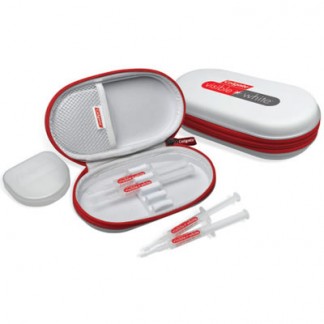The bleaching of vital teeth is not totally predictable and, even when the result is what is wanted, it may fade in time. The process can be repeated if fading is a problem. Teeth may become blotchy during the treatment but this tends to settle down after about a week, so be patient. The process is more reliable for upper teeth, probably because it is easier to retain the bleaching agent. We tend to do the upper teeth first, and that may suffice as these teeth are seen more when you smile.
Do not add too much bleach to the tray, as it may result in damage to the gums. While generally reversible, it is nevertheless undesirable. Remove any excess bleach with a tissue or a wet finger. If you get sensitivity then stop the bleaching and rinse well. If this occurs then please contact us. Do not eat or drink for 30 minutes after treatment. Store the bleaching material out of reach of children and at room temperature.
The speed of the process is determined by the time the teeth are exposed to the bleach. However, avoid trying for too rapid a response as this may result in sensitivity of the teeth. We suggest you keep the process to 30-45 minutes daily or morning and night. Even when using the bleach correctly you may get sensitivity, (which is rare) but reversible.
Avoid overdoing the bleaching. In the extreme it is possible to damage the teeth by overzealous bleaching. Over bleaching can also produce a result that is very white and will look quite unnatural.
The plastic trays can be cleaned by rinsing under water but be careful not to damage them. Store the tray on the model when not in use and don’t use hot water as this distorts the tray.
 479 Marrickville Road
479 Marrickville Road